15 Desserts From The 1950s We’re Really Not Too Sure About
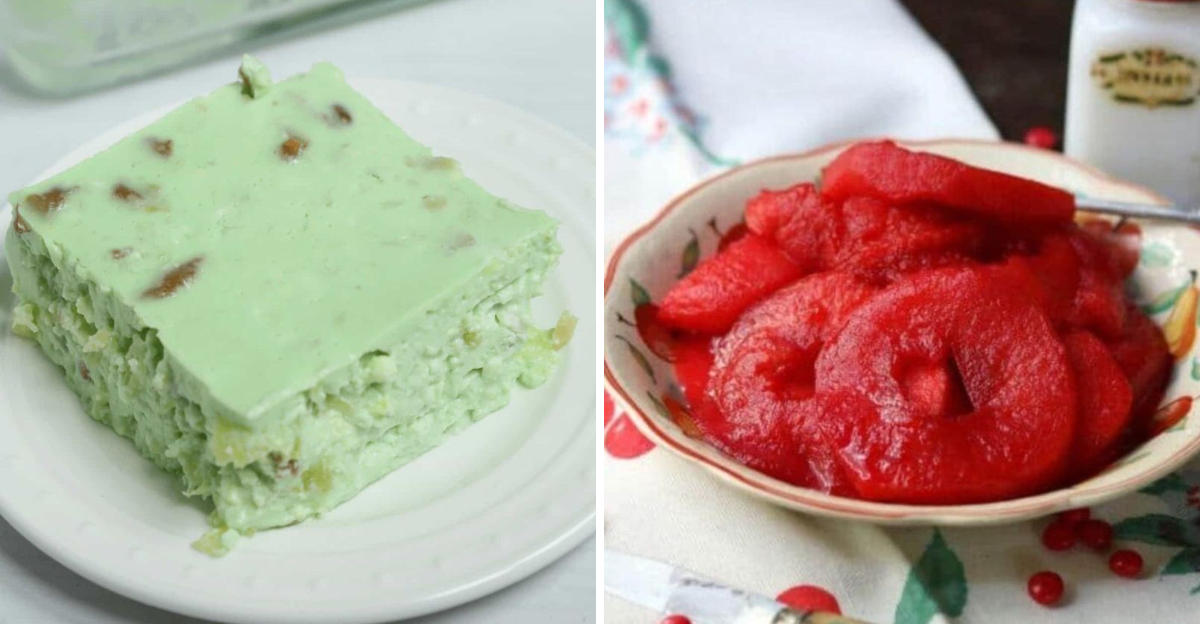
The 1950s were a golden age for gelatin molds, boxed mixes, and questionable flavor combos. It was an era where creativity in the kitchen was encouraged—but not always successful. Some of these desserts are kitschy classics, while others have us scratching our heads and wondering how they ever made it past the recipe card. Here are 15 desserts from the 1950s that leave us feeling a little unsure—even if we’re still a little curious.
1. Lime Jell-O with Cottage Cheese
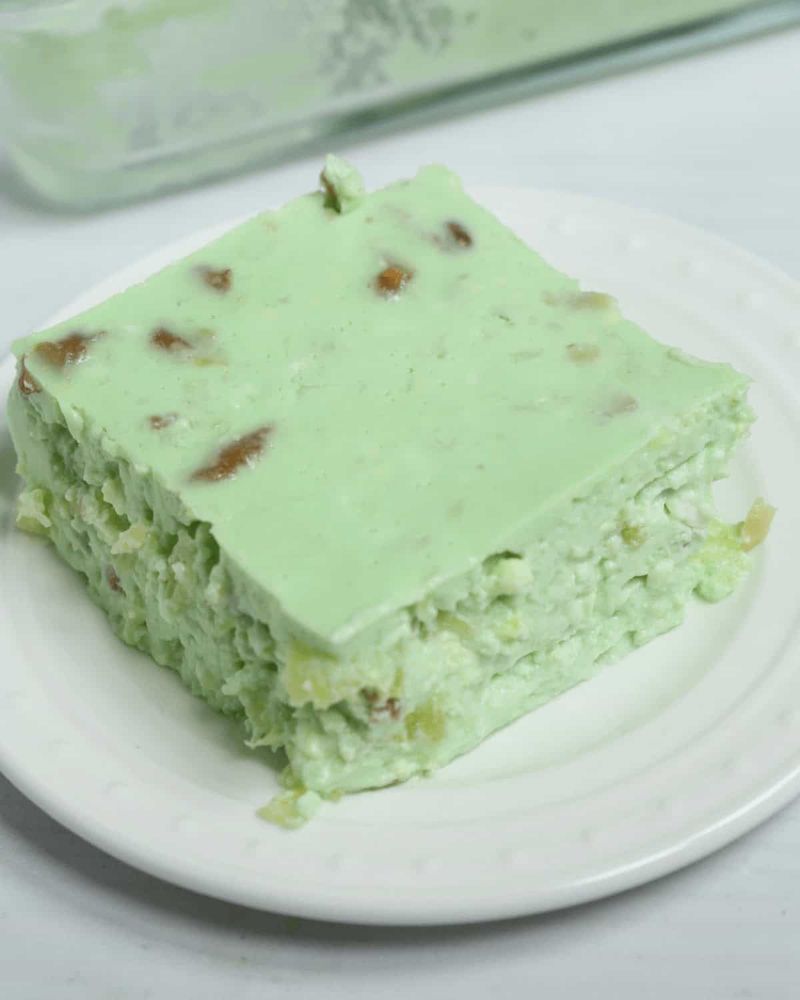
Imagine the vibrant green of lime Jell-O paired with the unexpected inclusion of cottage cheese curds. This combination was not quite a salad, nor a full-fledged dessert. Its texture was jiggly while offering a tangy surprise with each bite. The mix was often presented in mold forms, adding a decorative yet puzzling aspect to dinner spreads. Served at many a family gathering, it’s hard not to wonder who first thought to blend these ingredients. Yet, it remains a curious relic of mid-century culinary experimentation.
2. Prune Whip
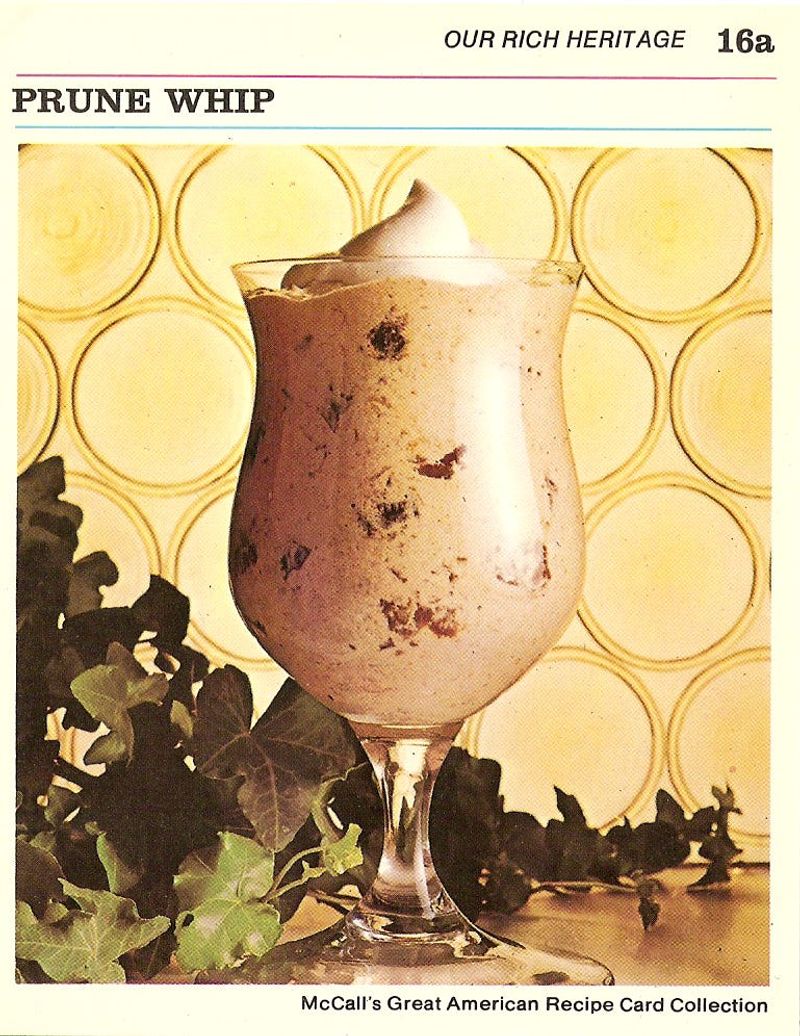
Picture a fluffy, sweetened puree of prunes delicately folded with stiffened egg whites. This dessert masquerades as a cloud but delivers a taste unmistakably prune-like. It’s a textural marvel, leveraging the whipped egg whites for a soft, airy finish. Popular in the ’50s as a light dessert option, prune whip was often served chilled. Despite its airy promise, the intense fruit flavor could catch the unprepared by surprise. It’s a dish that certainly invites curiosity, if not universal appeal, with its retro charm.
3. Tomato Soup Cake

In a twist that baffles many, the tomato soup cake incorporates an entire can of Campbell’s tomato soup. Spiced and sweet, the cake challenges traditional dessert expectations with its unique use of a savory base. The soup not only adds a surprising depth of flavor but also a moistness that keeps the cake tender. Often iced with cream cheese frosting, it mimics a carrot cake in texture and appearance. Despite its unconventional origins, tomato soup cake became a beloved creation in many households.
4. Tuna Jell-O Mold
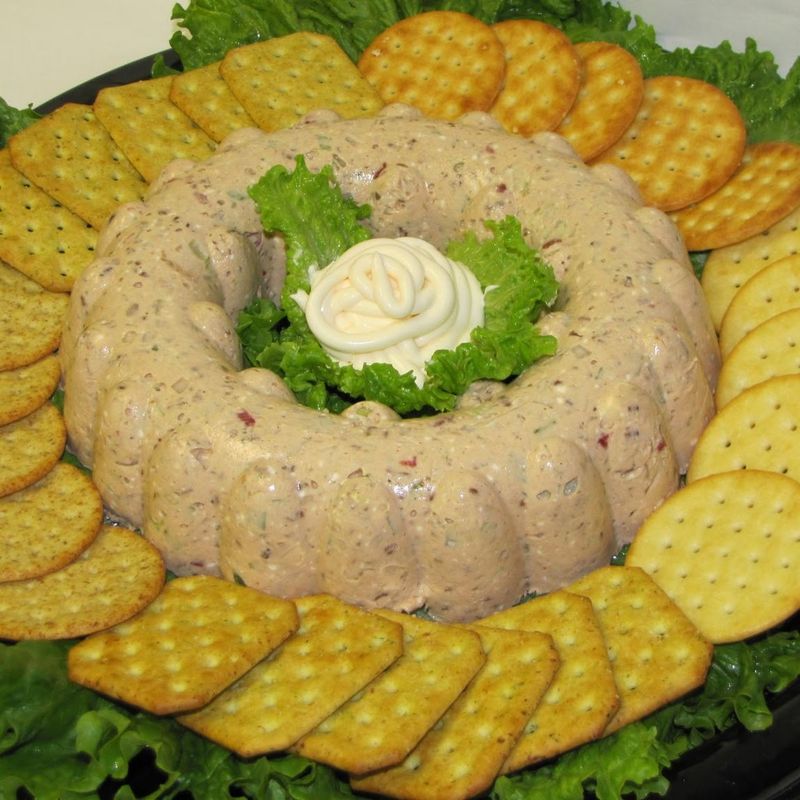
This dish stands out as a testament to the adventurous spirit of mid-century cooks. Essentially a savory “dessert salad,” the tuna Jell-O mold combined gelatin with tuna fish in a cold, congealed presentation. Often garnished with vegetables or lime slices, it defied culinary norms by serving fish in an unexpected format. While some might appreciate its novelty, others find the concept bewildering. This mold exemplified the era’s fascination with gelatin and its ability to encase nearly any ingredient.
5. Pineapple Cheese Salad
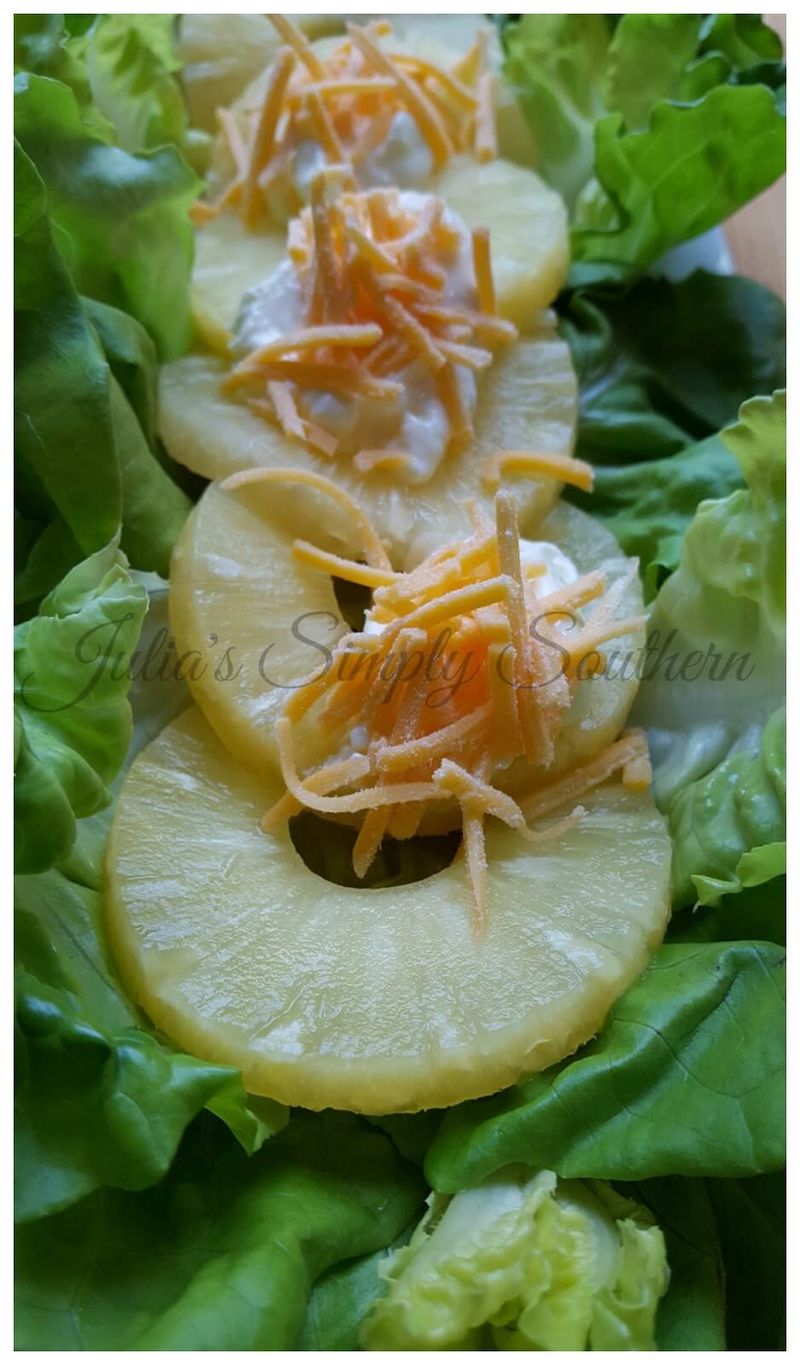
Straddling the line between dessert and side dish, the pineapple cheese salad is a conundrum. It melds the sweetness of canned pineapple with the sharpness of cheddar cheese, all suspended in lemon gelatin. This unique combination often left diners pondering its place on the table. While its fruity and cheesy juxtaposition might seem strange, it was a frequent guest at potlucks and family gatherings. The salad’s citrusy, creamy profile continues to intrigue those curious about retro culinary trends.
6. Chocolate Potato Cake
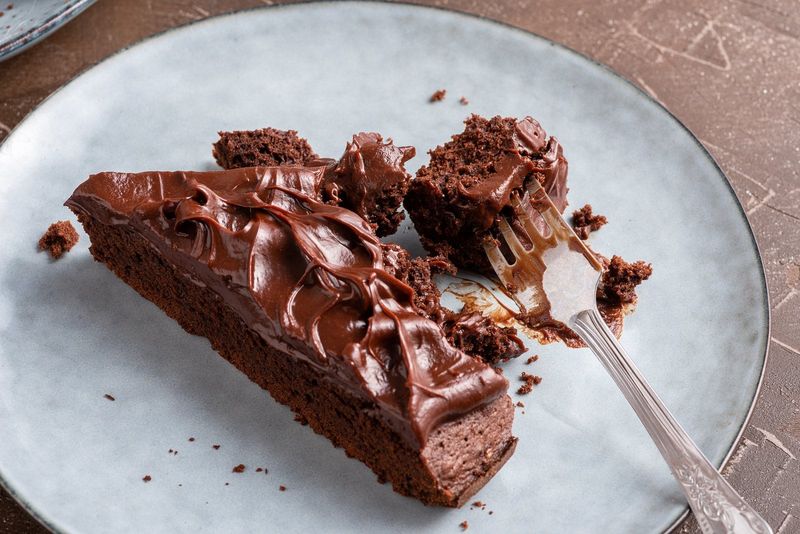
Imagine a chocolate cake so moist, it could only be achieved by an unexpected ingredient—mashed potatoes. This addition helped create a tender crumb, while maintaining the rich flavors of chocolate. Brought to life in the kitchens of the ’50s, the potato cake seemed audacious yet ingenious. Often frosted with chocolate icing, it was a treat that surprised many with its depth and texture. Considered a novelty at first, the chocolate potato cake has a way of charming curious dessert enthusiasts.
7. Floating Islands
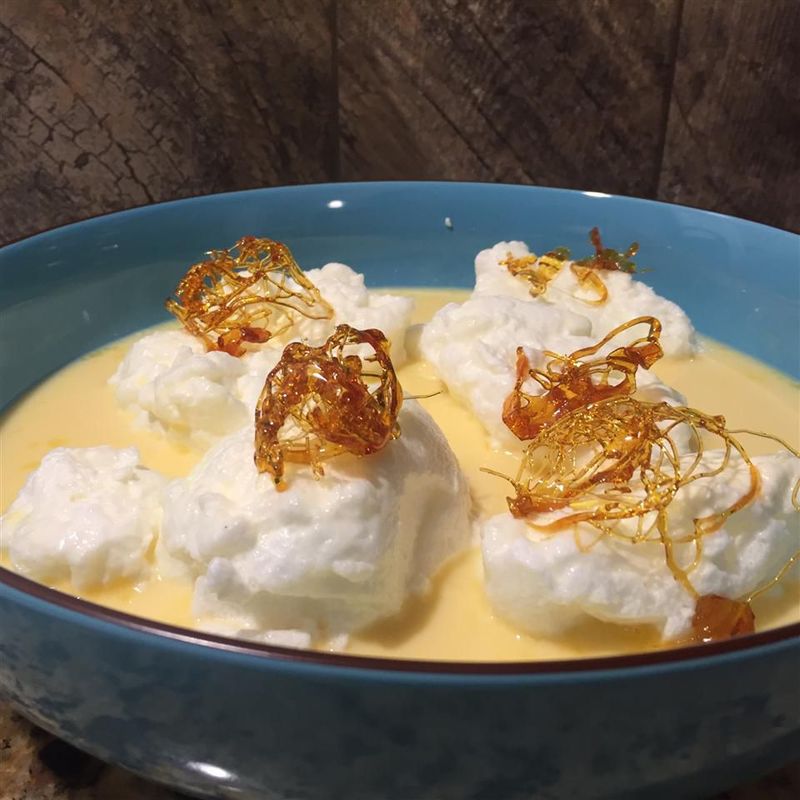
Floating islands offer a delicate dance between texture and flavor. These elegant desserts feature egg-white meringue “islands” drifting on a custard sea. The lightness of the meringue juxtaposes the rich creaminess of the custard beneath, creating a unique sensory experience. Popular in the 1950s for their sophisticated look, these desserts were often served at dinner parties. While they appear simple, achieving the perfect balance between airy meringue and sumptuous custard was an art, making them a labor of love in the kitchen.
8. Marshmallow-Cream Cheese Fruit Salad
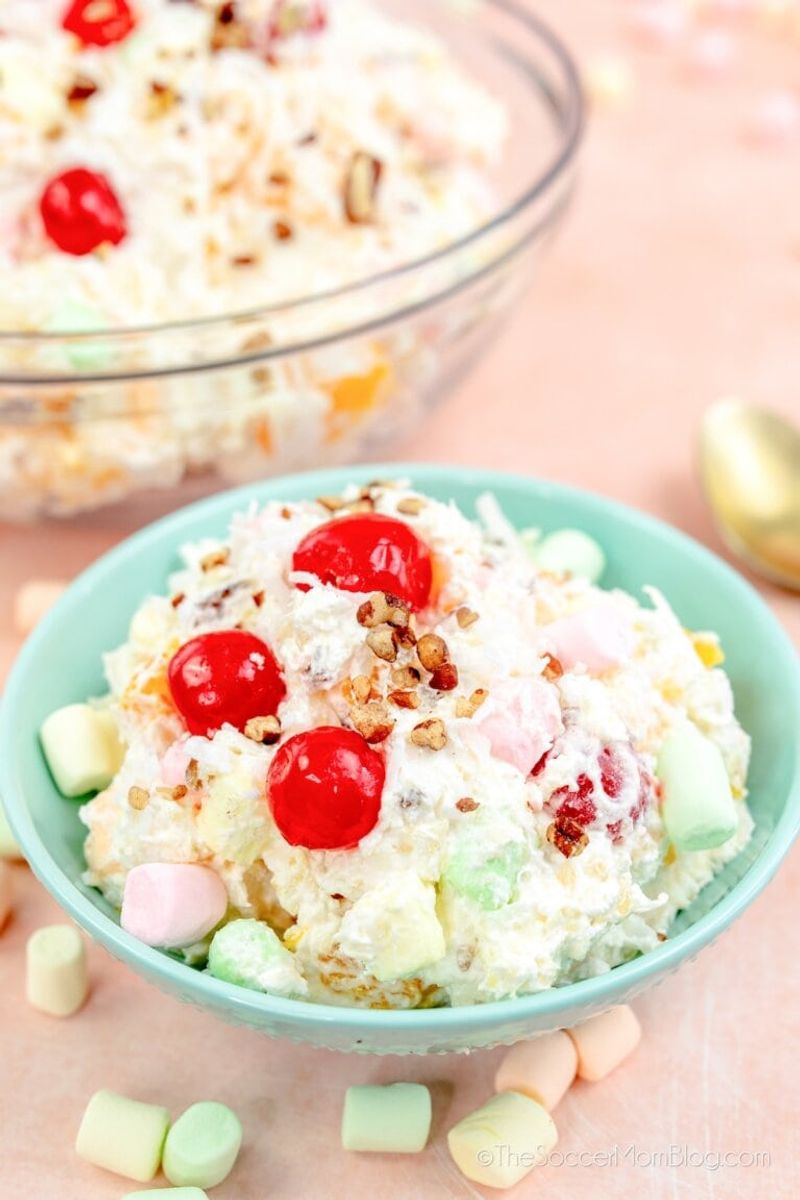
Imagine a salad that’s as much about whimsy as it is about flavor. This marshmallow-cream cheese concoction mingles canned fruit with cream cheese and marshmallows to create a dessert that’s light, fluffy, and quintessentially ’50s. Often adorned with maraschino cherries for an added pop of color, it was beloved for its sweet, playful nature. The mixture of textures and flavors offered an unexpected delight, making it a nostalgic favorite. This salad was often a centerpiece of holiday tables, adding a spark of fun.
9. Avocado Pie
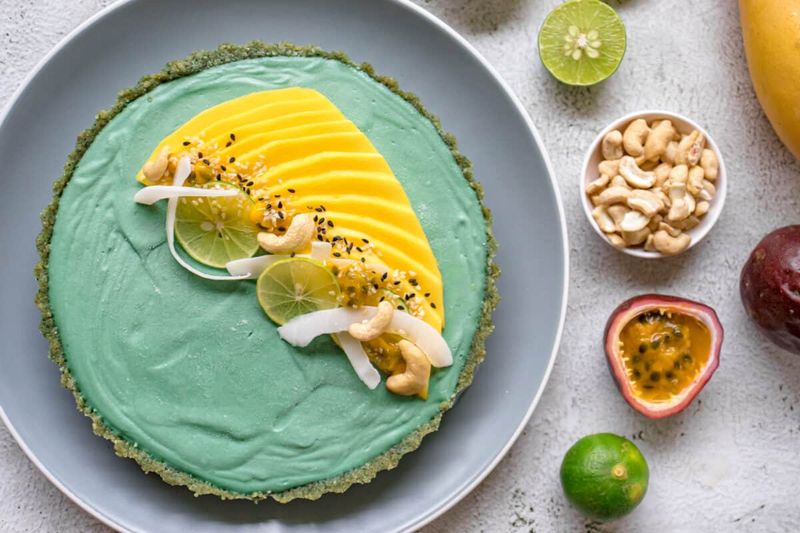
Avocado pie defies expectations by merging the creamy texture of avocados with the tartness of lime juice and sweetness of condensed milk. Housed in a graham cracker crust, this pie challenges the notion of traditional pies with its vibrant green filling. The concept of using avocados in a dessert may raise eyebrows, yet its silky-smooth texture captivates those willing to explore new flavors. This pie is a testament to the adventurous spirit of ’50s homemakers, eager to blend unusual ingredients in innovative ways.
10. Jell-O Ribbon Salad
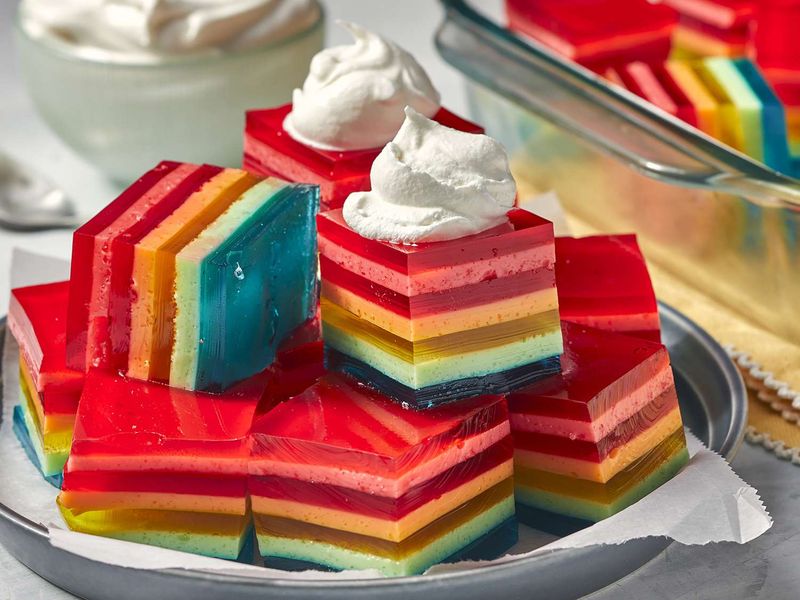
Jell-O Ribbon Salad is a visual marvel, boasting layers of colorful gelatin separated by creamy sour cream or whipped topping. Each layer offers a distinct flavor, from tart lemon to sweet cherry, creating a rainbow of taste and color. This dessert was a hit at parties, admired for its striking appearance. The layers demand patience and precision to achieve perfection. Despite its beauty, some find its texture unusual, but it remains a nostalgic favorite for those remembering mid-century gatherings.
11. Molded Salmon Mousse
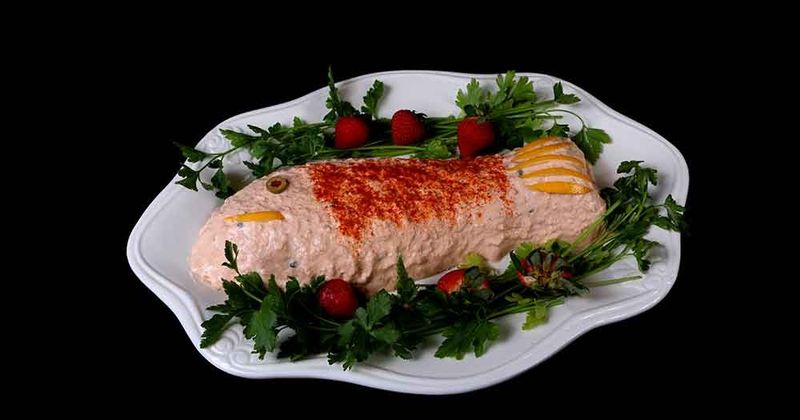
Salmon mousse in gelatin form, often regarded as a culinary curiosity, straddles the line between appetizer and dessert in its presentation. Molded to perfection, it was typically adorned with lemon slices, creating a visually enticing dish. This mousse puzzled diners with its creamy texture and fishy undertones. While definitely savory, it was sometimes offered as a post-dinner delicacy, blurring lines of traditional courses. Revered and questioned alike, molded salmon mousse remains a testament to the adventurous spirit of 1950s cuisine.
12. Miracle Whip Cake
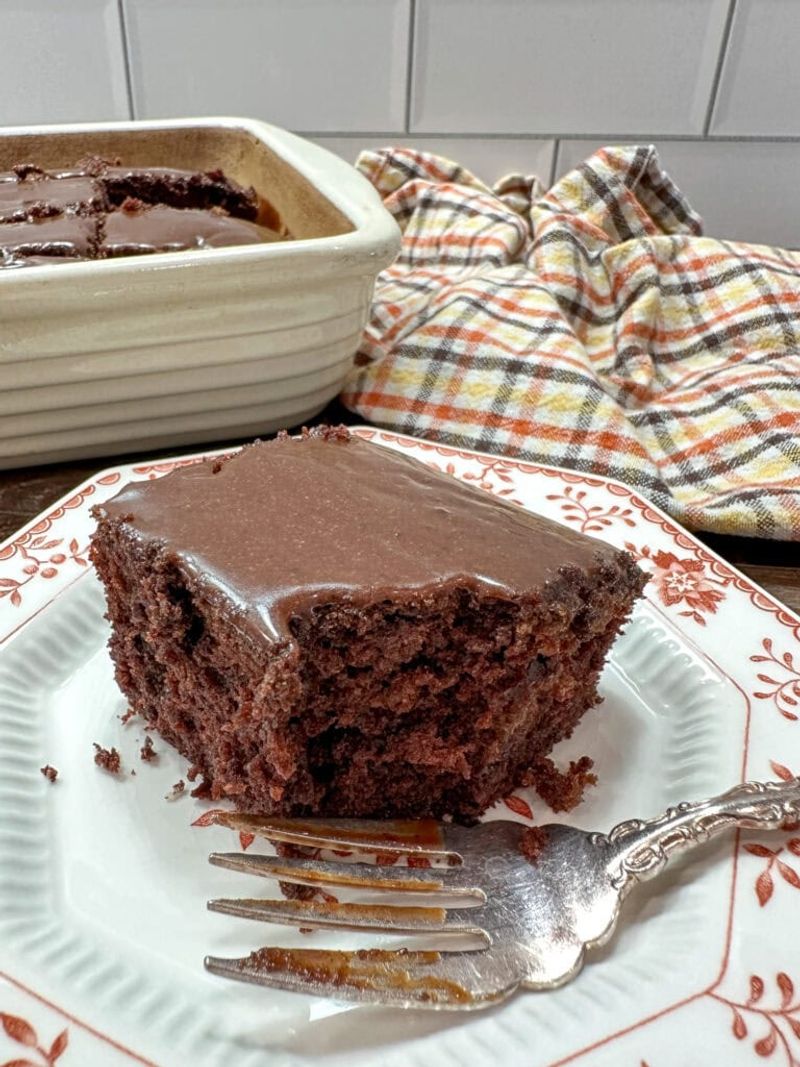
Miracle Whip cake is a testament to the resourceful culinary creativity of the 1950s. Using mayonnaise-like Miracle Whip in cake batter might seem audacious, yet it ensured a moist texture and rich flavor. This spiced cake, often adorned with chocolate frosting, defied expectations with its surprisingly pleasant taste. Seen as inventive, it offered a delicious surprise to those willing to venture beyond conventional baking. This cake became a symbol of the decade’s experimental spirit, boldly redefining dessert boundaries.
13. Banana Candies in Gelatin
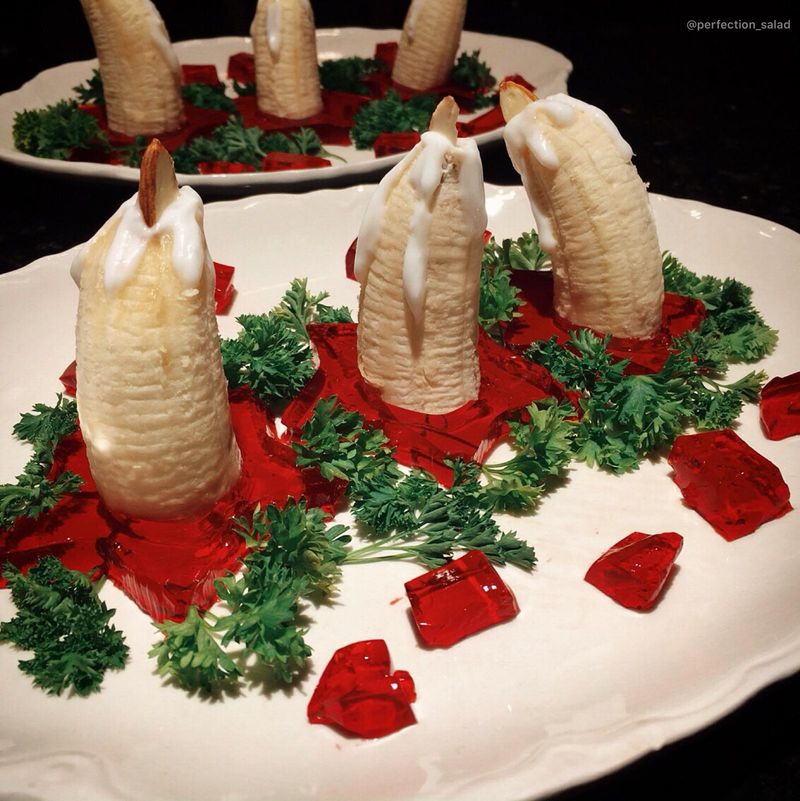
This dessert is a whimsical journey into the world of gelatin creations. Banana-shaped candies suspended in brightly colored gelatin presented a visual spectacle, akin to a snow globe of sugary delight. The contrast of textures and playful appearance delighted children and intrigued adults. Often served at parties, it was a conversation starter, raising eyebrows and curiosity. Despite its visual appeal, the combination of flavors was sometimes unexpected, making it a dessert that was more about fun than finesse.
14. Candied Cucumber Rings
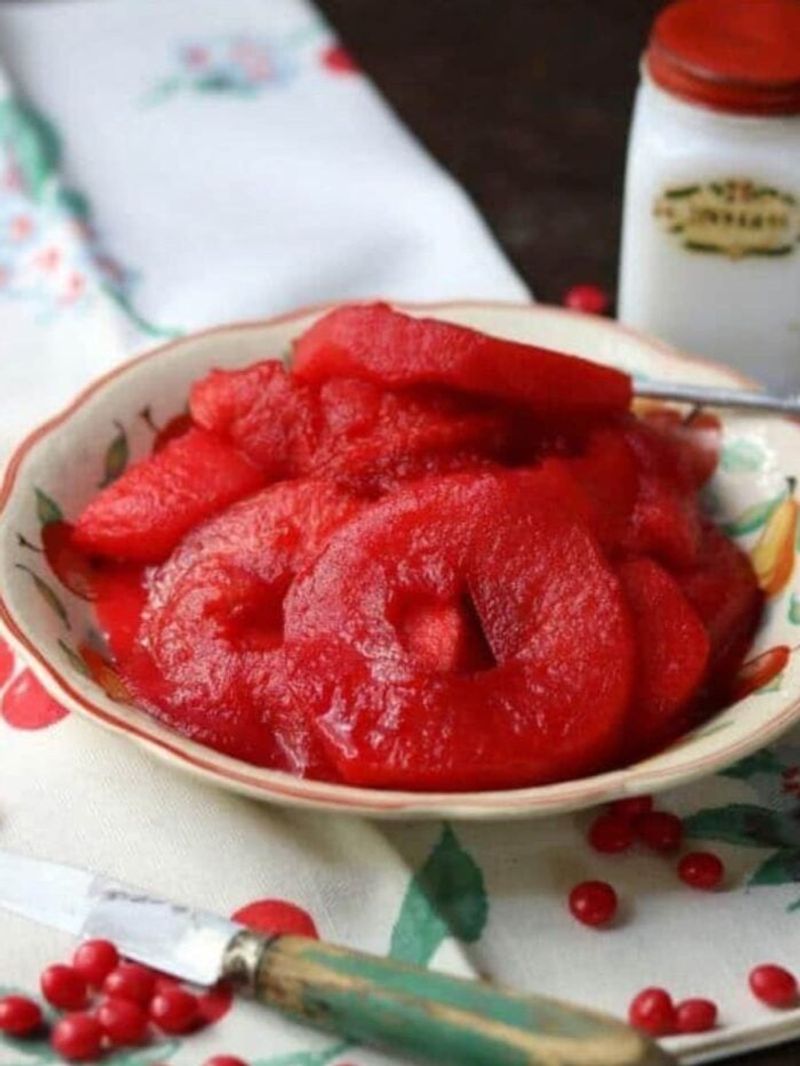
Candied cucumber rings are a testament to the adventurous spirit of 1950s cooks, blurring the lines between sweet and savory. These pickles, often dyed vibrant red or green, were transformed into a sugary dessert. The initial crunch gives way to an unexpected sweetness, confounding the senses. They were frequently served during the holidays, adding a splash of color to tables. While the idea might seem bewildering today, candied cucumber rings remain a quirky symbol of mid-century culinary innovation.
15. Icebox Fruitcake
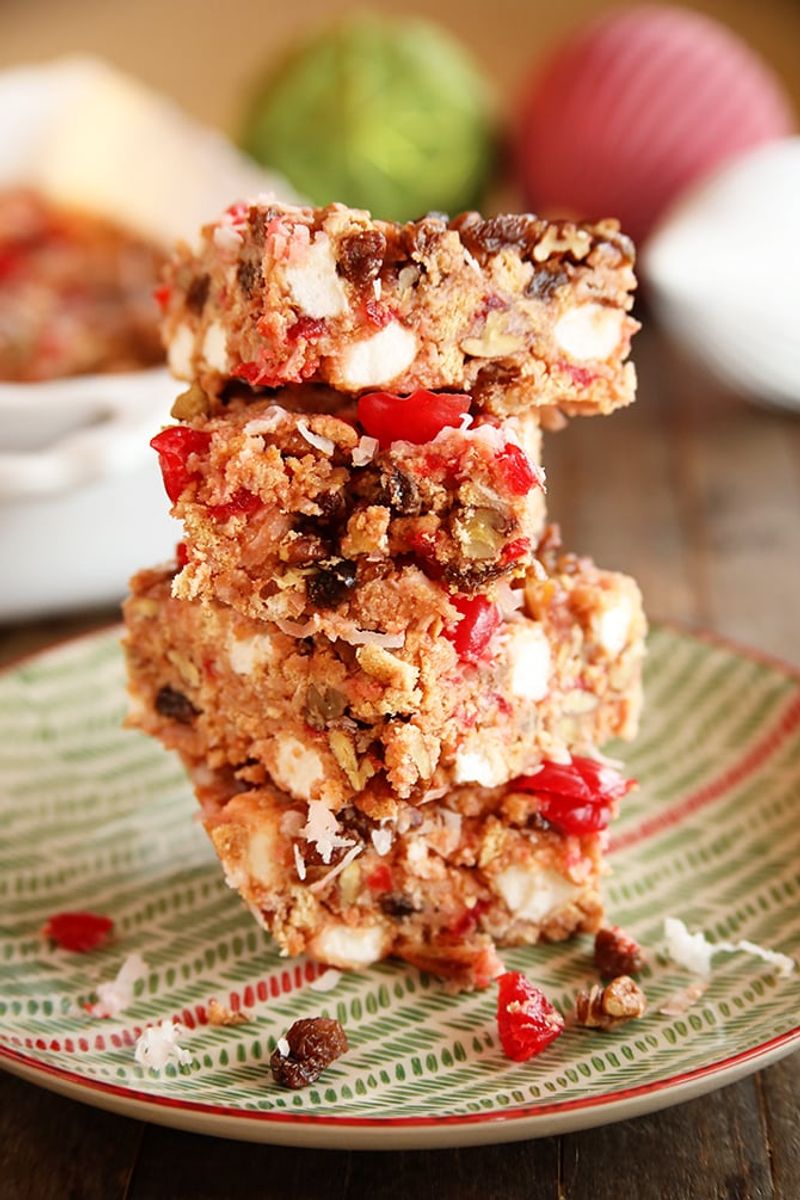
The icebox fruitcake is a no-bake assemblage that relies on the simple marrying of graham crackers, condensed milk, and a variety of candied fruits. This unconventional fruitcake was a time-saving solution for busy home cooks. It required refrigeration rather than baking, making it an easy choice for holiday gatherings. While its texture was rich and chewy, the flavor profile could be polarizing, loved by some and avoided by others. This no-bake wonder reflects the practicality and creativity of ’50s dessert trends.
